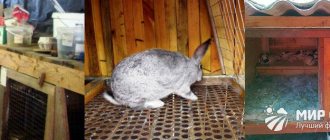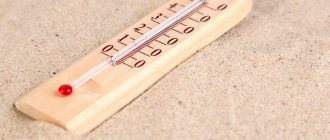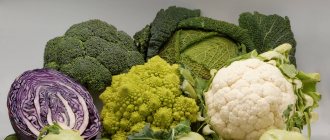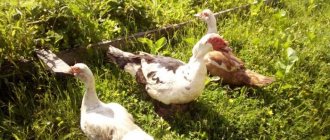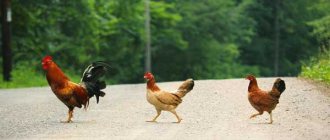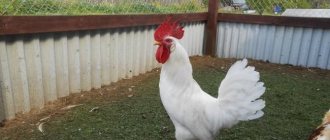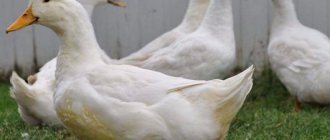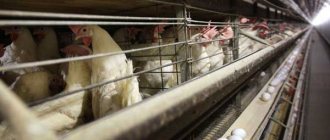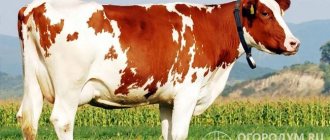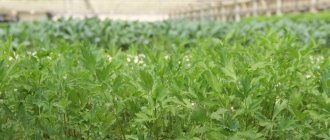For those who live in regions with cold winter climates, caring for animals living outdoors in winter requires taking into account some of the peculiarities of keeping them. Fortunately, ducks are very unpretentious and easy to keep, and in winter, like most waterfowl, they are well adapted to low temperatures. However, certain precautions should still be taken to ensure that the ducks do not become hypothermic.
Keeping ducks in winter
1 Provide an environment that will protect the ducks from cold and snow. Review duck feedings during the winter and ensure ducks are protected from winter hazards such as wind. Provide a house large enough for your ducks. Ducks in winter, if they do not live in a chicken coop with chickens, need a small wooden shed or shelter. Make sure the shelter is large enough for all your ducks to be comfortable.
- As a rule, it is recommended to allocate 0.6 sq. m per duck. For example, housing for four ducks should measure about 2.5 sq. m.
- Make sure there are no cracks in the walls or ceiling of the duck house to avoid drafts.
2 Provide heating for the coop. In general, ducks are quite good at regulating their body temperature in cold weather. However, your ducks will feel more comfortable if you provide heating in their shelter. This is especially important if there are teenage ducklings in the flock.
- Use heated lamps and provide heaters and lamps with a mesh screen to prevent ducks from coming into contact with the fixtures. Do not use electrical wiring on the floor, as well as floor heaters, this method can lead to short circuits and fire.
- If you have ducklings, use 250 watt lamps to heat the ducks' house.
3 Use proper lighting. If you plan to produce duck eggs in the winter, winter lighting is key.
- Use artificial lighting for half an hour at the beginning and end of each day, half an hour before sunrise, and then for half an hour after it sets.
- If you do not plan to continue receiving eggs, artificial lighting is not as important during the winter.
4 Provide insulation in the duck house from the earthen floor. The earth cools down greatly in the cold and snowy winter. Place a thick layer of straw or hay on the floor. This will protect their feet from freezing.
- You can also put wooden boards or flooring, this will also keep the ducks’ feet warm.
Features of winter feeding
In the summer, free-range ducks obtain most of their food themselves. The bird eats grass, insects, and small inhabitants of the reservoir. The grain mixture can be given once a day in the evening. When winter maintenance is provided, the owner must provide the bird with a complete diet.
Meals are provided three times a day. In the morning and at lunchtime they give wet mash. They consist of boiled grains, grated vegetables, and fruits. The bird eats carrots, pumpkin, and boiled potatoes. Green fodder is replaced with silage and green hay is given.
The evening diet consists of dry raw grain mixtures with the addition of corn. Uncooked grain is digested more slowly in the stomach. The bird remains full until the morning.
Proper maintenance of ducks in winter is based on the inclusion of vitamin and mineral supplements, feed yeast, and fishmeal in the diet. By receiving balanced feed, the bird develops and strengthens its immunity. The likelihood of getting diseases . The productivity of the parent stock increases.
What to feed ducks in winter
The winter diet for ducks should contain an increased amount of protein, especially if you plan to receive duck eggs in the winter. In winter, ducks especially need nutrients to stay strong and healthy despite the cold. For example, grain feed can be fed in sprouted form, just like for chickens.
- Protein is vital to duck health. If you purchase store-bought feed specifically for ducks, you should keep in mind that the protein content in them should be from 16 to 18%.
Provide fresh herbs for the ducks. Since green grass, which ducks love, is difficult to find in the winter, supplements such as fruits, vegetables, corn and herbs should be introduced into the ducks' diet.
- Vegetables such as kale, lettuce and chard are good additions instead of greens. All these vegetables store well in winter and can be used to feed ducks. And lettuce can also be grown on a windowsill, and from already used stalks.
An important factor is to provide ducks with food high in fat, giving these high-calorie treats before bed. The temperature drops significantly during the night. Therefore, the process of breaking down fats in the body will help ducks stay warm. The high fat content of high calorie treats will require more energy to be digested, keeping the duck warm at night.
- Peanuts and corn are good options here. Peanuts are much more nutritious and nutritious than corn, so choose them whenever possible.
Make sure your ducks have access to fresh water. You should keep a bowl of fresh water for the ducks at all times. During the winter, leave water in a heated shelter to prevent it from freezing.
- Check the water every time you visit the ducks. If the water is frozen or dirty, replace it with fresh water or add hot water to the bowl, controlling the temperature so that the ducks do not get scalded.
How to organize a chicken coop in a polycarbonate greenhouse on your own
Polycarbonate is the most acceptable material for a greenhouse. Thanks to it, heat is retained and it allows enough light to pass through. For the winter, you can build a chicken coop in such a greenhouse.
In winter, be sure to turn on the lights for your chickens when evening begins. If it gets especially cold outside, you need to turn on the heater
Keeping birds will require preliminary preparation:
- Clean the greenhouse from debris and dirt;
- Remove all equipment;
- Prepare drinking bowls, perches, and feeding areas;
- Prepare bedding – the best option for chickens is straw;
- Maintain an acceptable temperature regime - the chicken lays eggs at a temperature of +15 to +25 C;
- Provide lighting.
Keeping poultry in this design has its advantages. The chicken will be reliably protected from other animals and the cold; there will be no need to build a chicken coop, which will save money. In such a greenhouse you can start raising broilers in winter.
Winter shelters for ducks
Make sure the ducks have a place outside that is protected from the wind. Ducks tolerate cold very well, but, as a rule, do not like wind.
- Hang a tarp or thick cellophane in one corner of the duck pen. If it gets windy, the ducks can take shelter behind a tarp.
- You can also build a small shelter from the wind for ducks from scrap materials.
During the winter, it is especially important to ensure thorough ventilation of duck housing. When ducks breathe, they release a lot of moisture. This can lead to poor health and frostbite in winter. Duck rooms, like chicken coops, should not be completely deprived of access to outside air and should have ventilation holes. Use mesh material on ventilation openings to prevent predators from entering.
- To protect ducks from drafts and predators, ventilation openings should always be positioned high. Do not install vents at ground level.
Tips: how to properly maintain a greenhouse in winter
Animals produce enough carbon dioxide, which plants need to carry out photosynthesis. They also give off heat, which can increase the yield several times, and their droppings will be wonderful fertilizer (and most importantly - free!). However, there is a small drawback: ammonia vapor released by animals harms plants. To avoid the problem, it is necessary to install a ventilation system. In order to keep animals in a greenhouse, a number of conditions must be met.
Wintering bees in a greenhouse is the most competent and safe solution for the cold season
Wintering takes place in several ways:
- In a polycarbonate greenhouse;
- In an insulated and improved greenhouse.
In spring, a greenhouse made of polycarbonate tends to heat up quickly. As a result, the bees' sleep is interrupted and they begin to actively fly out of the hives. To avoid this, you need to cover the greenhouse with a layer of roofing material.
This will prevent premature temperature fluctuations and will not disturb the bees' sleep.
Another option is to cover the interior of the premises with sheets of foam plastic. Due to this, the room is darkened and an acceptable temperature is maintained for the bees to winter.
What is the care for bees and preparing the greenhouse for the winter season:
- Before placing bees in the greenhouse, it is necessary to treat all wooden surfaces with special oil.
- You also need to make special stands for the hives to prevent them from being damaged by rodents.
- In winter, from December to February, no additional action is required. In mid-February, you should start feeding: honeycombs sprayed with melt water.
You can take the hive outside in March and then keep the bees there. It should be fed with honey and beebread.
Ducks on the pond in winter
Let ducks swim on sunny days. Ducks love to swim even in winter. Most ducks can handle water in cold temperatures, but it's best to err on the side of caution. Wait until the sun adds heat during the day. Use a deep, wide pool or pond on warm days to allow ducks to swim and bathe, as bathing is an important addition to duck hygiene.
Profitable breeds
The main problem for beginning farmers when breeding ducks at home is choosing the right breed. To make things easier, the most popular varieties of ducks among hobbyist poultry farmers are listed below.
Peking duck
The oldest domestic duck was bred in China more than 300 years ago. To this day, the breed does not lose popularity due to its high productivity:
- adults weigh up to 4.5 kg;
- Ducklings at 2.5 months produce a carcass weighing 1.5 kg;
- Egg production reaches 200 eggs per year.
The plumage of the bird is snow-white, which is why the carcass has a neat presentation.
The breed is unpretentious, gluttonous and has strong immunity. Female Pekin birds have lost their brooding instinct, so to hatch chicks you will have to purchase an incubator or find a broody hen among other bird species.
Musk or Indian duck
The duck species is native to South America, where the birds still live in the wild. Musks, or “mute ducks,” are not capable of quack—they can only hiss or coo softly in order to distinguish them favorably from other duck brethren.
Musks can have different colors: white, blue, chocolate, black, black and white.
The weight of an adult musk drake can reach 6 kg, and that of a duck – no more than 2 kg. Indian ducks grow slower than Peking ducks, but they consume a lot of greens, approaching the type of feeding of geese. Slaughter of young animals for meat begins no earlier than 4 months of age, when the drakes weigh 3–3.5 kg. The meat of the “mute” is lean, red, similar in taste and appearance to game.
Muscovy ducks are excellent brood hens and caring mothers. During the year, the female lays from 40 to 80 eggs.
Mulard breed
A hybrid of Peking and Muscovy duck obtained in France. The bird combines the best qualities of its parents:
- rapid growth and size of the Peking duck;
- exceptional lean meat - from Indian duck.
Mulard grows for 60–70 days until slaughter, producing a carcass weighing 1.5 kg. It is unprofitable to feed young animals longer; the birds begin to get fat and grow more slowly.
Mulards do not produce offspring, so each batch of ducklings is obtained by re-crossing a mute drake and a Pekin duck.
Moscow Whites
The result of crossing the Peking breed and the English Khaki Campbell duck. Moscow Whites weigh up to 4 kg, egg production is 140–160 eggs per year. They are unpretentious, have good health and tolerate winter cold well.
Ukrainian breed
The Ukrainian gray duck was bred by crossing wild mallards and poultry. This is a meat breed, reaching a weight of 3 kg at adulthood and 2 kg at 60 days. A distinctive feature of the cross is the ability to fatten on natural reservoirs and pastures, almost without the use of grain feed.
The ducks lay well - up to 170 eggs per year. The bird is unpretentious and has tasty meat, similar in appearance and taste to game.
How to raise ducks
Breeding ducks is a fascinating and profitable process. Depending on the breed, each female will lay from 50 to 200 eggs per year, from which up to 150 chicks will hatch. Ducks do not need to create any special conditions, especially since many breeds have not lost their brooding instinct.
Hatching eggs by a hen
This is the easiest way to get ducklings at home without having an incubator. To do this, it is necessary to keep ducks that have not lost their maternal instinct, for example, musk ducks. Highly productive breeds (Peking) and crosses lack this instinct.
For hens, a secluded nesting place is allocated in the barn - dark and cozy. It is better to make nests for hatching eggs in the form of houses, so the hen will be calmer.
While the duck is laying eggs, the eggs are taken from the nest, leaving one egg as a “lining” so that the female does not change her nesting site.
A signal that the female is about to begin incubation is the appearance of fluff in the nest. The duck plucks down from its chest to insulate its eggs.
Under a medium-sized bird, place from 9 to 13 eggs. The duck must completely cover the clutch with its body.
Food and water are placed near the hen. It is better to place the drake in another room so that he does not lure the female from the nest.
When the ducklings begin to hatch, the babies are taken away from the hen until the last duckling hatches. Then you can return the offspring to the duck and let her raise the chicks or raise them herself.
One duck can sit on eggs twice in a season and hatch babies.
Breeding ducklings in an incubator
To obtain hundreds of young animals and breed ducks that are unable to incubate, they resort to the help of an incubator. Ducklings can be hatched in all models of household and farm incubators.
The following mode is suitable for waterfowl eggs:
- temperature 37.7–37.9 ℃ at the beginning of incubation, 37.4 at hatching;
- humidity - 60–63% in the first two thirds of incubation, 70–72% at hatching;
- turn from 3 to 12 times a day;
- spraying the eggs with warm water in the second half of incubation.
The incubation time for duck eggs is 28 days, for the musky variety it is 32–35 days. Egg turning is stopped one day before the expected hatching date. The chicks are removed from the incubator when they are completely out of the egg and dry.
Litter in the barn
Particular attention should be paid to the litter. Ducks feel great if the litter is deep in winter. The reason for this is the fact that in such a “lounger” organic substances disintegrate, at the same time, a sufficient amount of heat is released for the duck.
Therefore, ducks will not feel cold in any weather. Only a couple of times a year you need to completely change the litter. It is better to do this in spring and autumn.
Peat, as well as wood sawdust, straw, etc. can be used as bedding. Crushed rods, which are made from corn cobs, are also used.
As for peat, it is good because it can absorb a large amount of moisture - 8 times more than its own weight. For comparison: sawdust absorbs four times its weight, straw - twice.
Peat is best used also because it has the ability to absorb air, and from it pathogenic gases.
Sawdust is difficult to decompose; it extracts less heat than straw; moreover, it can subsequently be used as fertilizer.
These indicators are applicable for the central zone of Russia. In southern regions this figure may be slightly lower due to milder weather conditions.
Caring for these birds in the cold season should be reduced to one main requirement: the bedding material must be clean and dry.
To ensure that there is no excessive amount of moisture in the barn, as well as harmful gases, you need to use ventilation. To do this, you can put poles on the ceiling beams. The distance between the poles should be approximately 20 centimeters.
Straw should be placed on the poles; the thickness of the layer should ideally be about 30-40 centimeters. This design will ensure uniform distribution of fresh air in the room. In addition, all this will better eliminate harmful gases and dryness in the barn.
Factors that determine good poultry management include duck stocking density. So, 3-4 ducks should sit on every m2. In the southern regions, this figure can increase to five heads, because ducks spend more time outside.
The litter should ideally be prepared for winter in the summer. It is better to store it in a barn or attic, the main thing is that the room is dry.
